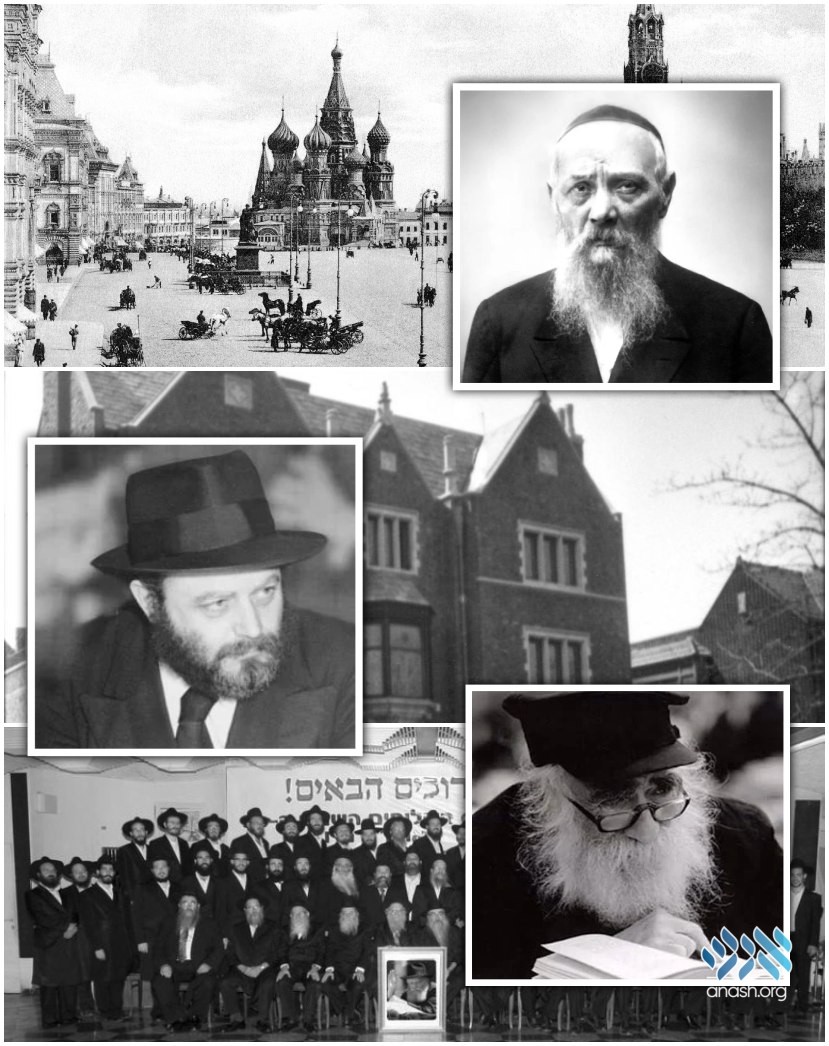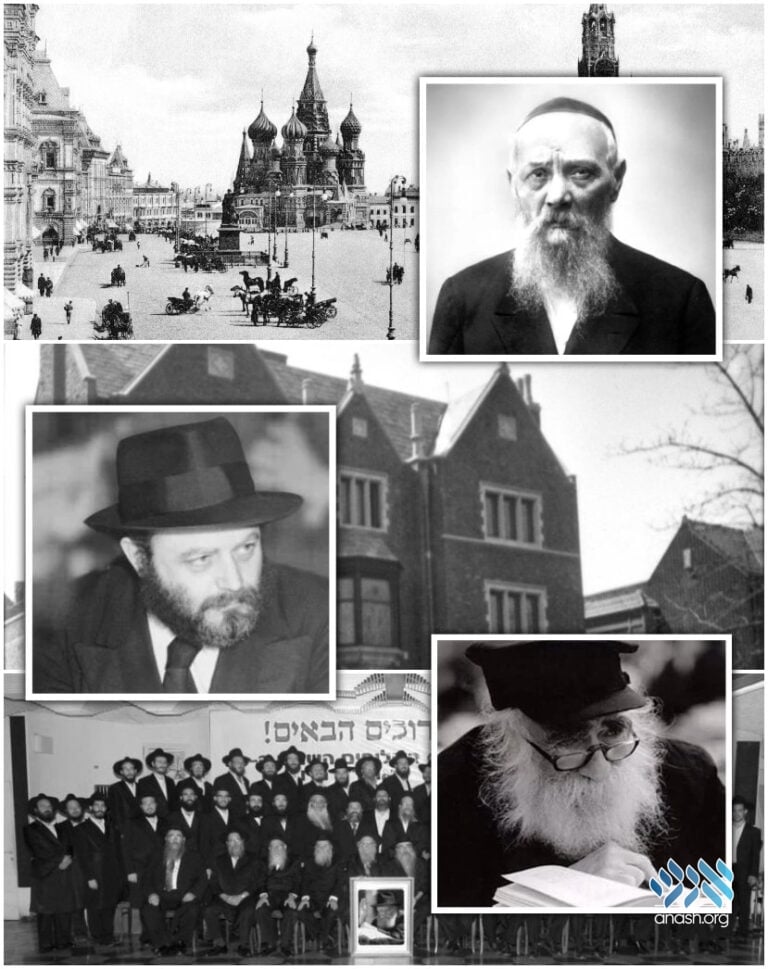י״ט אב ה׳תשפ״ד | August 22, 2024
The Untold Story of a Lost Teaching of the Rebbe’s Father
From an underground farbrengen during the Soviet Union to the personal journals and letters written by the Rebbe, Rabbi Motti Rubin traces a Torah teaching of Reb Levik across continents and generations.

From an underground farbrengen during the Soviet Union to the personal journals and letters written by the Rebbe, Rabbi Motti Rubin traces a Torah teaching of Reb Levik across continents and generations.
By Rabbi Motti Rubin – Chabad.org
Moscow, USSR – 1929
By the end of the 1920’s, Stalin’s regime was a decade into their relentless mission to extinguish the flames of Jewish life within the Soviet Union. The leader of Soviet Jewry, the Sixth Rebbe, Rabbi Yosef Yitzchak Schneerson, of righteous memory, had already been compelled to leave the country. Despite his absence, the spirit of his devoted followers remained undimmed.
Shabbat had almost concluded, yet the farbrengen was still going strong. The chassidim were gathered in a clandestine yeshivah located in a tiny synagogue in Moscow. There was great excitement over the rumor that the towering giant of a chassid, Rabbi Levi Yitzchak Schneerson, was set to arrive.
“Reb Levik,” as he was affectionately known, was due to attend a sham convention that the government had called to force the rabbinate to sign public letters (to be sent around the world) attesting that there was no religious persecution in Russia. Even worse, at times they would force the rabbinate to permit certain practices that were not in the spirit of authentic Torah-true Judaism.
Reb Levik was known as a fierce defender of Jewish practice and belief, who would never give in to their demands. The young students and elder chassidim eagerly awaited the chance to hear from the renowned rabbi and to gain much-needed inspiration and guidance from him.
As anticipation built, Rabbi Dovber Nissan Bespalov, a local, took the opportunity to share a Torah thought with the crowd. Rabbi Dovber himself was a venerated chassid, whose father—R. Yaakov Mordechai—had been a personal study partner with the Fifth Chabad Rebbe, Rabbi Shalom DovBer, and he certainly had a lot to share.
Suddenly, from the shul entrance, the tall figure of Reb Levi Yitzchak appeared. Their long-awaited guest had finally arrived!
Straight from the conference, Reb Levik directed his footsteps towards the synagogue, as he needed a minyan to say Kaddish for a loved one.
Upon the conclusion of the prayers, Reb Levik joined the group who were listening to Rabbi Bespalov as they eagerly waited to hear from their guest. He addressed Rabbi Dovber—a contemporary of his—as “Berel” (an affectionate version of “Dovber”), yet he received no response. He tried again, but Rabbi Dovber remained immersed in the teaching he was sharing, oblivious to his presence.
Finally, Reb Levik gave it another try. “Rabbi Bespalov!” he called out. Immediately R. Bespalov paused his speech and noticed Reb Levik’s presence.
Reb Levik subsequently asked him, “Why did you only respond when I called you by your secular last name?”
The Power of the Jewish Name
Reb Levik then shared the following Torah thought:
We know that “Avram” was the birth name of our patriarch Abraham. His name was later changed to “Avraham,” and the Torah states that he is not to be called by his original name, “Avram,” but solely by “Avraham.” This restriction is even codified in Jewish law.
Yet, the same is not true regarding our patriarch Jacob: His birth name was “Yaakov,” and although the Torah explicitly states that once his name was changed to “Yisrael” he should no longer be referred to by his original name, the name Yaakov is still used in Scripture following the name change, and we Jews follow suit, often calling him Jacob.
Why the difference?
To answer, Reb Levik pointed out an oft-overlooked fact. Abraham was named by his idol-worshiping father, Terah, a non-Jew, while Jacob received his name from Isaac, his Jewish father.
“So you see,” Reb Levik concluded, “the power of a name given by Jewish parents is such that even if G‑d Himself changes your name, the Jewish name you received at birth still remains. It can never be taken away from you.”
Taken aback, Rabbi Dovber replied: “He shares Torah about a needle and he pokes like a needle!” (In the Yiddish: “Er redt vegen a machat, un ur shtecht vee a machat.”)
This speaks volumes about the power of Jewish names, given by Jewish parents. A Jewish name isn’t only a nice Jewish connection. It’s deeply rooted in the soul, and—mostly importantly—is the core of Jewish identity.
But what is the meaning of the “needle” reference?
As mentioned, Reb Levik had just finished saying Kaddish for a loved one. According to Chabad tradition, after the prayer service, a mishnah is taught and one final Mourner’s Kaddish is said.
This is the English text of this particular mishnah:
A needle which is placed on the step [leading down to a mikvah] in a cave, and the water is moved back and forth, as soon as a wave has passed over it, it becomes ritually clean.
But what did Reb Levik teach about the needle? To unravel the mystery, we must fast-forward almost six decades and cross from one land to another
Ramat Yishai, Israel – 1989
In Israel, another type of rabbinical conference was taking place.
Out of his love for the Land of Israel and its people, the Rebbe—Rabbi Menachem M. Schneerson—of righteous memory, sent several cohorts of young couples and rabbinical students to settle as his emissaries in the Holy Land in 1976-1978.
Every year, these emissaries gather on Reb Levik’s yahrzeit, the 20th of the Hebrew month of Av.
In 1989, the organizers of the event honored the celebrated chassid, Rabbi Mendel Futerfas—a fearless veteran of the Chabad Underground in the Soviet Union who had served over 17 years in the Russian gulag—to share words of inspiration.
Reb Mendel shared that he was once with Reb Levik in the USSR, when R’ Levik had to recite the Mourner’s Kaddish and then shared a homiletic Torah teaching on the mishnah regarding the machat, the needle:
The needle represents each Jew.
The midrash refers to the righteous Enoch as a “sewer of shoes.” Why is a shoemaker the emblem of righteousness? Well, a shoe contains an upper part and a lower half (sole), and the job of the shoemaker is to piece them together to create a serviceable object.
As Jews, our mandate is to “sew together” heaven and earth. To accomplish this, we have our threaded needle, which is made of three parts:
- The sharp point, which allows the needle to penetrate whatever it is sewing.
- The eye, referred to in Hebrew as the ear.
- The thread, which gives purpose to the point and the eye.
Tradition teaches, “A thread spun of three strands won’t easily break.” This represents the 3 important components of Divine service upon which the world: Torah, prayer, and acts of loving-kindness.
The “sharp point” refers to our ability to penetrate the mundane world, in order to elevate it.
To ensure that we do not, G‑d forbid, puncture or cause pain to others, we need the “ear,” to humbly receive wisdom from others. This then creates space for the thread that enables us to do our Divine mission, like the pious Enoch, and connect the higher realms with the mundane.
Brooklyn, NY – 1989
Following the conference, the organizers wrote a report, which they faxed to the Rebbe, noting that Reb Mendel had shared a teaching he personally heard from Reb Levik, the Rebbe’s father.
When the Rebbe read the report, he immediately asked to hear this idea from Reb Mendel directly, but by then it was already the middle of the night in Israel. The Rebbe’s secretary, Rabbi Leibel Groner, called up the organizers to convey the Rebbe’s request, and Rabbi Yosef Y. Liberow, one of the participants in the conference as well as a grandson of Reb Mendel, assured him that he would speak to his grandfather and get all the details for the Rebbe in the morning.
Rabbi Groner, however, said that the Rebbe was waiting for the details and insisted that no time be wasted.
Although it was the middle of the night, Rabbi Liberow rushed from his home in Kfar Chabad Bet to wake up Reb Mendel in Kfar Chabad proper, who retold all the details on an international call with the Rebbe’s office in Brooklyn.
Apparently, a teaching from his father was so meaningful and personal to the Rebbe that he couldn’t wait even a few hours to hear it.
In fact, that very night was the 45th anniversary of Reb Levik’s passing, and the Rebbe shared a Torah teaching in his father’s honor, focusing on the very topic of the needle and lessons that can be derived from it (albeit not mentioning what he had just heard from the Holy Land hours earlier)!
Present at that address were representatives of two very different demographics. There were campers of the Gan Israel overnight camp in Upstate New York, who made the trip down to Brooklyn to attend the Rebbe’s gathering. And there were also seniors, members of Kollel Tiferet Zekenim Levi Yitzchak, an organization that brings Torah classes and other enrichment to seniors, named in memory of the Rebbe’s father. In his talk, the Rebbe referred to them affectionately, as “old men with long white beards.”
The Rebbe noted that the lesson he would derive from the needle would resonate and be meaningful to both age groups:
The teaching that is chosen, an explanation of one of the mishnayot studied in connection with the yahrzeit, is relevant to children and will inspire them in their efforts to spread Yiddishkeit in the surroundings. It will also serve as an inspiration to adults when they dedicate themselves to these goals.
In that talk (available here), the Rebbe focused on how the needle represents a person’s focused and powerful drive to elevate his surroundings, and its function in stitching together heaven and earth, but did not speak about the three elements as his father did.
New York, 1942
However, a perusal of the Rebbe’s scholarly output reveals that the Rebbe did, in fact, address the three elements of the needle on several occasions.
World War II was raging in Europe, and the Rebbe and his wife had just escaped to New York via France and Lisbon. There, they settled near their in-laws, and the Rebbe took an active role in building up Chabad’s growing educational and social institutions in the New World.
It was in the winter of 1942, just after the shiva for Rebbetzin Shterna Sarah Schneerson, wife of the Fifth Rebbe.
In his personal diary, the Rebbe wrote that like the needle the Jew connects two unrelated items, heaven and earth.
There he adds another point:
In order for a needle to be able to sew, it must first create a hole, a void. This represents the notion of bittul, making oneself naught in the face of something greater than oneself. This concept is also seen in the place where the needle attains purity, a cave, a void in the rock, which then creates space for the purifying water to gather. In fact, the Hebrew word for immersion, tevilah (טבילה), has the same letters as habittul (the [notion of being[ naught).
In his entry, the Rebbe adds another element. On Shabbat, sewing is forbidden. This is defined as having created at least two stitches.
This, he says, means that our connecting the physical and the spiritual must contain two elements: the dynamic of ratzo, the burning desire to rise above the mundane and cleave to the world of spirit, and shov, the determination to plant oneself firmly on earth and work to create change within the world around us.
The sharp edge of the needle—writes the Rebbe–represents the need for boldness in one’s performance of mitzvahs, as the Mishnah directs us: “Be bold like a leopard.”
New York, 1945
Two years later, this theme again arose in the Rebbe’s writings, this time in a letter to a rabbi in Israel.
At the time of the writing (winter of 1945), the Rebbe was actually saying this mishnah daily, as he was in the year of mourning for his father, who had died in Soviet Exile in Alma-Ata, Kazakhstan.
In that letter, the Rebbe focuses on another element of the mishnah, which tells of the needle being placed on the steps of the cave and, through the back-and-forth of the water, becoming pure.
The Rebbe explains that the needle represents the goal of the soul, which is to infuse such spirituality into its surroundings that it rises to a point higher than it was in Heaven before its initial descent.
How does the soul attain this goal? Through being immersed in the “great waters,” i.e., the troubles and challenges of life—specifically, the great test souls go through during dark times when G‑d’s light is not apparent.
The word used in the mishnah for “steps [of the cave],” maalot, literally means “ascents.” Thus, it can be understood to mean “the elevation of the cave.” How is the cave of materiality elevated? Through the back-and-forth, through the Jew serving G‑d in the two modalities mentioned above.
This concept gets to the core and mission of every Jew, which both Reb Levik and the Rebbe truly lived: to serve as bold “needles,” stitching heaven and earth together and elevating those around us.
As we celebrate 80 years since Rabbi Levi Yitzchak’s passing, let’s reflect on the message highlighted in this story.
Each of us is charged with the above mission: to sew together the spiritual and physical in our lives and connect them as one. This is accomplished specifically through our soul’s descent into this physical world, where it’s put to the test.
We cannot underestimate what we accomplish through a Shabbat meal, putting on tefillin, eating kosher food and all the physical activities of our day-to-day lives. We are stitching together the fabrics of creation, creating a divine masterpiece out of the tapestry of reality.
Reprinted with permission from Chabad.org



We appreciate your feedback. If you have any additional information to contribute to this article, it will be added below.